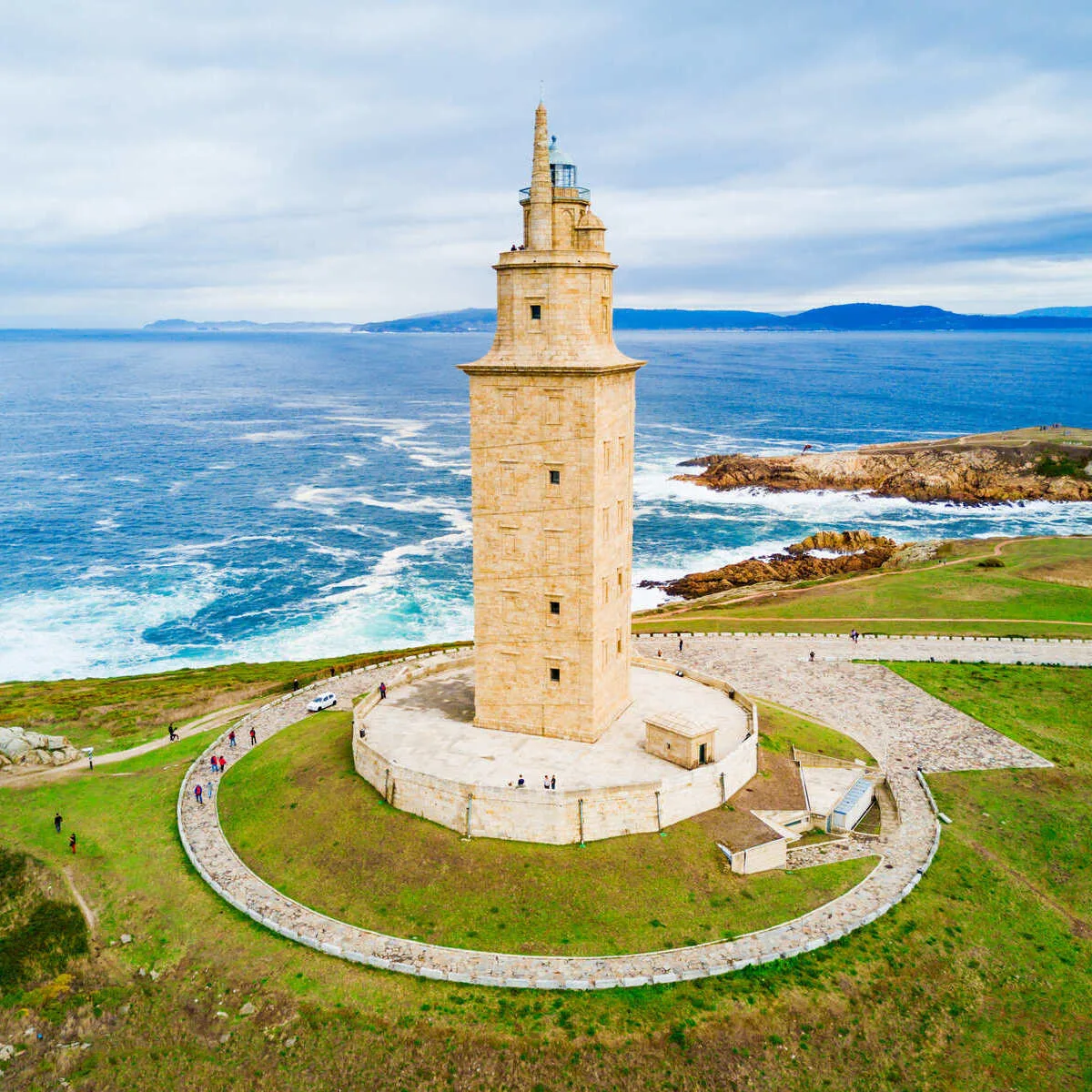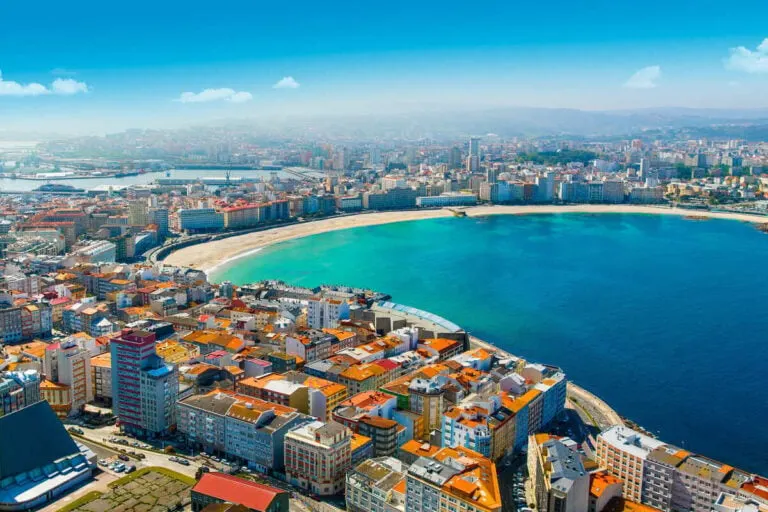Home to world-renowned architectural feats by Gaudí, with La Sagrada Família and Park Güell, to name a couple, not to mention the honey-colored Mediterranean beaches, Barcelona is perhaps the leading tourist destination in Spain, drawing in millions of tourists every year.
Unironically, it’s precisely its irresistible appeal and popularity that’s proven to be its downfall: between the rising prices and the unsustainable crowding, the city is now taking a tougher stance on tourism and actively looking to reduce it, by whatever means possible.
In that, we mean an outright ban on private accommodation providers in the historic center, higher tourist tax, and if you’re unlucky enough, you might even find yourself in a crowd of anti-tourist chanter—we hope you don’t mind being targeted with water guns, if it comes to that.
If you’ve read between the lines, it’s not exactly the best time to be visiting the Catalonian capital, but that’s not to say you should avoid Spain altogether.
We know you’re craving some of that ancient culture, the delectable Iberian cuisine, and most importantly even, the laid-back coastal vibes, and in that case, why not head in the opposite direction entirely?
Tucked away in the quieter, northwestern-most corner of Spain, A Coruña offers all that and then some:
Spain’s Unsung Cultural Capital

You might know Galicia for its pilgrimage routes leading to Santiago de Compostela or its dramatic Atlantic coastline, but unless you’re a professed Hispanophile, chances are you’re yet to get familiarized with the offbeat A Coruña.
The second largest city in the autonomous province, with a population of over 249,000 people, it sits on a large gulf stretching out into the ocean, laying claim to some of the most beautiful beaches in Galicia and a couple of world-renowned landmarks.
It’s also one of Spain’s most historically-significant destinations, even though it seldomly features alongside Barcelona, Seville and the like as a cultural capital: for starters, did you know it houses the last surviving, still functional Roman lighthouse?

We’re of course referring to the iconic Tower of Hercules, perched proudly on a peninsula tip some 1.5 miles from the city center, since the 1st century AD, when it was erected by Ancient Romans, at a time when Spain existed under their rule.
A UNESCO World Heritage Site, it attracts visitors from all over the country––and beyond––not only due to its inestimable architectural value as a 2,000-year-old structure, but also the fact it remains the second-tallest lighthouse in Spain, beaten only by Faro de Chipiona, down in equally-underrated Cadiz.
The magnificent tower alone is reason enough for you to add A Coruña to your Spain bucket list, but this is why you’ll want to stay longer:
A Gorgeous Old Town That Belongs In A History Book

The Cidade Velha (or Old Town) is dotted with historical landmarks attributed to different time periods, from the Celtic to the Roman to the medieval to the modern period, and the best way to see all of its highlights is… you guessed it, by walking!
This 1.5-hour guided tour is perfect if you’re looking to optimize your time, costing only $32 to book, but if you prefer going at your own pace, you can definitely set out to explore on your own, and in that case, we’d suggest you start from Plaza de María Pita.

Named after a native woman that entered the hall of Spanish heroines for defending A Coruña against an English Armada attack in the 17th-century, it is where the ornate City Hall is located, and all around it, there are pedestrianized lanes flanked by colorful facades to get lost in.
Before you start verging off path, however, you should know some of the most important sites are Castro de Elviña, the remains of a Celtic fort that predates the city’s capture by the Romans, the 12th-century Colexiata de Santa María do Campo church, and the waterfront Galerías:
A row of buildings distinguished for their glazed-window balconies, it’s an 18th-century architectural solution to the city’s unpredictable weather, avoiding the rapid aging of the structures and that centuries-old humidity problem affecting coastal dwellings.

Sandy Beaches As Far As The Eyes Can See
A Coruña’s unique cityscape is also defined by its fortified harbor, protected by an imposing San Antón Castle, now housing an archeological museum, as well as its glitzy Praia de Riazor, or how we like to call it, the Galician Cocapabana:
A wide strip of soft, honey-colored sands lined by palm trees and modern developments, it is the city’s equivalent to a resort zone, while neighboring beach Orzán is the Bohemian escape a short 25-minute walk away, boasting a high concentration of bars.

Whether you’re looking for a more private spot to catch the last few sun-rays of the season, or you’re out sightseeing, walking the extent of the 5.6-mile-long Paseo Marítimo is a must-do: running around the headland, it passes all of the trendiest beaches and even the Tower of Hercules.
Other quieter beaches nearby include As Lapas, down from the lighthouse, Santo Amaro, an additional 10 minutes up the coast, and a popular one for watching the sunset, and Durmideiras, where the seas are an unusual-brighter shade of blue.

Now a warning, if we may: A Coruña is not a Mediterranean destination, as it straddles the Atlantic, and though fall temperatures may be pleasant and comparable to other parts of Spain––ranging from 57.2 to 71.6°F––the water is certain to be freezing cold.
In other words, Galicia is not somewhere you go for a beach holiday, at least not in the fall, unless you find that 65.8°F is tolerable enough for swimming, and you should definitely make sure you pack a light jacket or sweater for the occasional chilly evening.
Stay In A Coruña For Under $50 A Night

Thanks to its near-perfect weather in the off-season and unmatched coastal vibes, Spain is one of the most highly sought-after destinations in Europe this fall, as well as one of the priciest:
Good luck keeping daily costs under $175 in Barcelona, once all those alfresco dinners, souvenirs and guided tours are added up, and if you ever manage to find a room in a 3-star hotel for under $212 a night in the Gothic Quarter, do let us know, it’d be much appreciated.
In the meantime, we’ll be hanging in budget-friendly A Coruña instead, where a paella lunch is unlikely to set you back by over $15, there’s good wine for under $5, and hotels average a much cheaper $113 per night, as estimated by Budget Your Trip.

Again, that’s only an estimate. In reality, you can find rooms for far less, even:
Take Saudade Hostal Cafeteria, for instance, a privately-managed guesthouse attached to a well-frequented cafe, where they serve the best coffee and pastries in town, and double rooms start from a very-reasonable $43 a night.
There are at least 18 properties where rooms cost between $45 and $73 through Booking.com, with notable examples on the cheaper end being Hotel Torques and Hotel Nido, while better-equipped, 3 to 4-star offers can be found at Hotel Mar del Plata and Eurostars Blue Coruña.
Overall, a one-week trip to the Galician gem is priced roughly $685, accommodation, food and transportation included, excluding flights.

As a whole, Galicia is one of the most fascinating regions in Spain:
From the Camino de Santiago, a pilgrimage route taking you through quaint Northerly villages, all the way to Santiago de Compostela, where St. James is reputed to be buried, to Pontevedra, a charming medieval town lining a scenic riverfront, the cultural wealth is boundless.
However, if you’re a traveler on a budget, and a newcomer to the area, A Coruña is a good place to start exploring.
Credit: Source link

